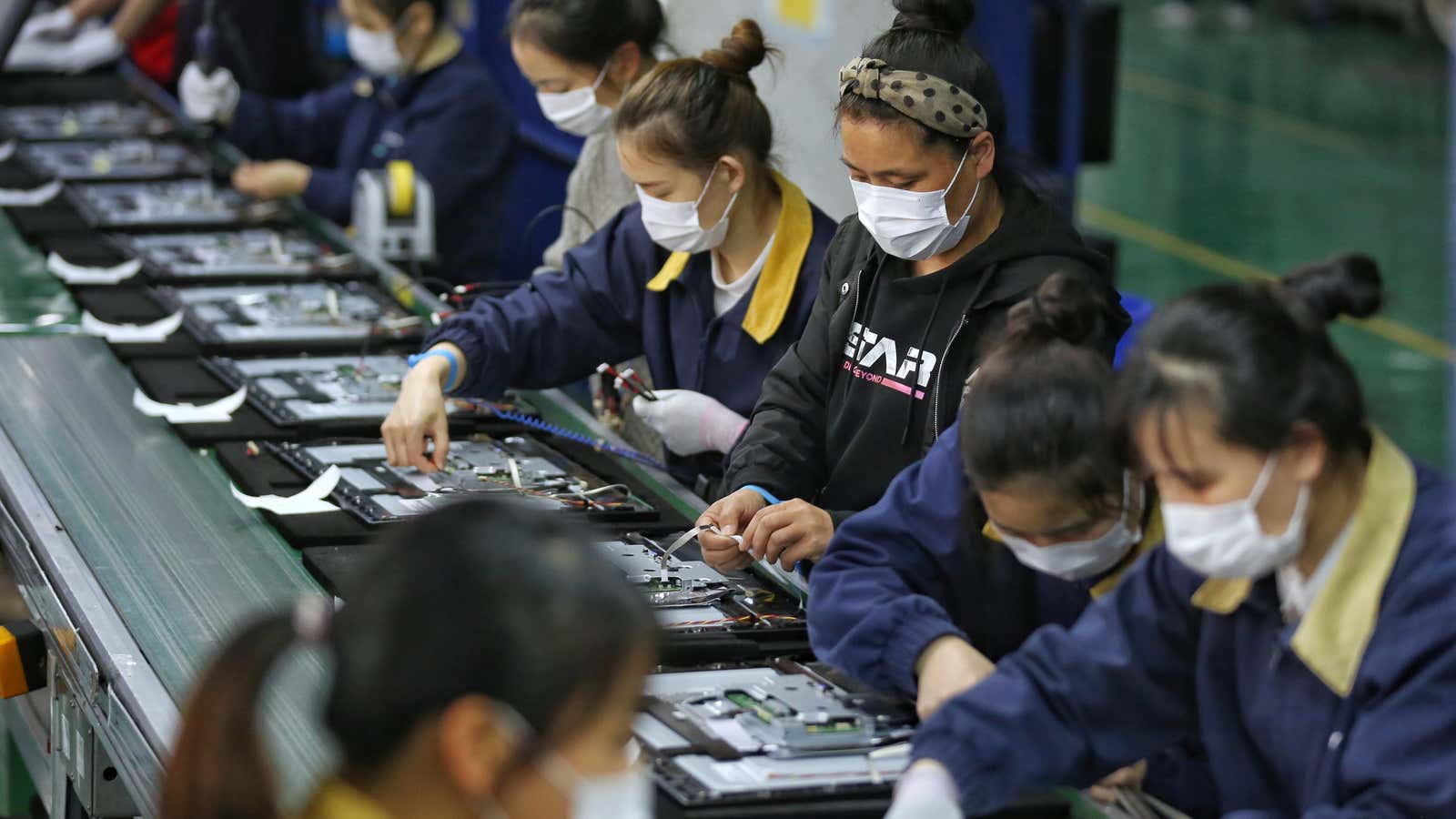The past few years have been tumultuous for corporate supply chain managers. First came the US-China trade war and its lack of speedy resolution. Then came Covid-19, which upended industries from tech to fashion and laid bare how much global corporations rely on China for manufacturing and components.
China’s rising costs had companies looking to broaden their sourcing well before the trade war or coronavirus, but those events are increasing the urgency. In a recent survey of 260 global supply chain leaders across different industries and regions, research and advisory firm Gartner found 33% had already moved sourcing or manufacturing out of China or planned to do so within the next three years.
The big reason was expenses from the trade-war tariffs. The battle between the US, the world’s largest consumer market (though China was on track to overtake it last year) and the world’s leading manufacturer has been reshaping global trade. “In interviews, several executives said the additional costs of the US-China trade war for their companies were more than $100 million,” the report stated. “This is by far the main reason for the companies diversifying part of their sourcing and manufacturing operations to other countries in Asia or further afield.”
It wasn’t the only reason. Companies also want supply chains that are generally more resilient to disruptions.
Over the past several decades, supply chains have become reliant on global networks of specialized suppliers. That paradigm was fine as long as trade was running smoothly and barriers, such as tariffs, continued falling.
A resilient supply chain can also be costly, which is why companies haven’t always made it a priority. “Even for those that do have the financial resources, the menu of options (e.g., dual sourcing, alternative factories, spare capacity and more generous safety stocks) is often unpalatable,” Gartner noted in its report. “Such measures appear to go against the well-versed philosophy of lean supply chains founded on just-in-time principles.”
Recent years have brought enough upheaval to prompt companies to question this model. They’re looking to diversify suppliers to countries including Vietnam, Mexico, India, and Malaysia. A number have also begun producing closer to the markets where they sell, called “nearshoring.” A quarter of the supply chain professionals Gartner surveyed said they had brought some of their manufacturing closer to their end markets for more speed and control over their supply.
It won’t be easy, or cheap, for companies to broaden their supply chains. China has an unparalleled manufacturing infrastructure that keeps many companies producing there. But the costs of not diversifying are rising, and the incentives are great enough that governments are getting involved. Already, India and Japan have offered financial benefits to companies that move their manufacturing out of China.
